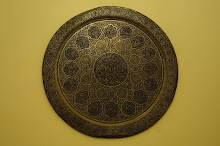
The Cedars of Lebanon stand solitary on a mountain top. What little remains of these majestic trees is a silent testament to the health, or lack of it, of Lebanon and the rest of the Middle East.
The Cedars are the most powerful symbol of Lebanon, with the Lebanese flag sporting an image of one of the remaining trees. They have lasted millennia. They stand witness to the dozens of armies that marched up and down the coast of Lebanon, to and from battle, and to the tenacity of Phoenicians, Canaanites and Maronites that conquered the mountains to harvest the Cedar wood.
They stand in the lore of the Middle East: in the wood of the Solar Boat buried beside the Great Pyramid of Giza, in the cedar chest that Osiris was sealed in to die, and in the boats that plied the Mediterranean in search of trade, plunder and treasure. Yet, what stands now is a small grove, some dozens of trees, where once there were mountainsides. The disappearance of the Cedars of Lebanon is due to deforestation and soil erosion - a classic tale of humans blindly using up their resources for short-term interest.
Some of the trees in the Cedar grove above the village of Bsharre are now also ill. They have a disease that requires their pruning and a diminishing of their majesty and longevity. The Cedars are a symbol of where the Middle East has come to: a state of disregard for nature, its resources, and above all for humans' place in the great play. The mountains above Beirut are now paved with concrete.
That city, despite flashes of architectural beauty, suffers from rampant grey construction, the fumes of diesel and automotive congestion, and a seaside littered with garbage. Cairo, Damascus, Alexandria all suffer the same fate. Demographics are a key driver of this unfortunate circumstance. Large populations blindly living out technological and industrial habits will mean pollution and concrete - a new kind of deforestation.
There are activists who are attempting to reclaim the Lebanese mountains. Their efforts are commendable and indeed one can see the dark saplings on the slopes of Jaj or the Chouf in the Lebanese mountains. However, their efforts must expand in scope and kind - it is not enough to replant hundreds of trees. Hundred of thousands must be sown, and this effort must also be reflected in the clean-up state of cities and politics.
There are activists who are attempting to reclaim the Lebanese mountains. Their efforts are commendable and indeed one can see the dark saplings on the slopes of Jaj or the Chouf in the Lebanese mountains. However, their efforts must expand in scope and kind - it is not enough to replant hundreds of trees. Hundred of thousands must be sown, and this effort must also be reflected in the clean-up state of cities and politics.

The Cedars are today a symbol of past glory, but they are also a symbol of deadwood, reflecting the essential need for renewal. The road ahead for the Middle East, like any society, can only be in renewal. This can take place in projects of reforestation, or a clean-up of the environment, or in urban renewal - not just through words, but also through activities requiring human planning, devotion of time, money and in resources which are currently allocated to less productive activities: political infighting and corruption, ideological wishes, or a comforting sense of victimization.
The latter produce barren mountains and the bare remnants of a forest - an ailing grove whose majesty is fading fast. The former is an act that reflects the imperatives of nature: renew or die. Admission of this state of affairs may be harsh, and a sting to pride, but it is a rule of nature to renew for the sake of one's children - for survival.
This rule applies to people's relationship to their environment, as well as to their religion, politics and their relation with their neighbour. This rule stands not only for Arab societies but for the Arab-Israeli conflict as well. The most famous appointment of the woods of the Cedars of Lebanon was with Solomon's Temple.
The hard and scented cedar beams were the basis of that spiritual monument. The memory of that place, the Temple Mount, is now the symbol of the toughest conflict between peoples on this planet.
The wood of the Temple building has rotted away, but the spirit behind it - a relationship with the divine that means inclusion and not intolerance - must be now renewed, and renewed again - or the region will perish as the old wood has.

All text and photos in this post copyright 2008 John Zada and John Bell













No comments:
Post a Comment